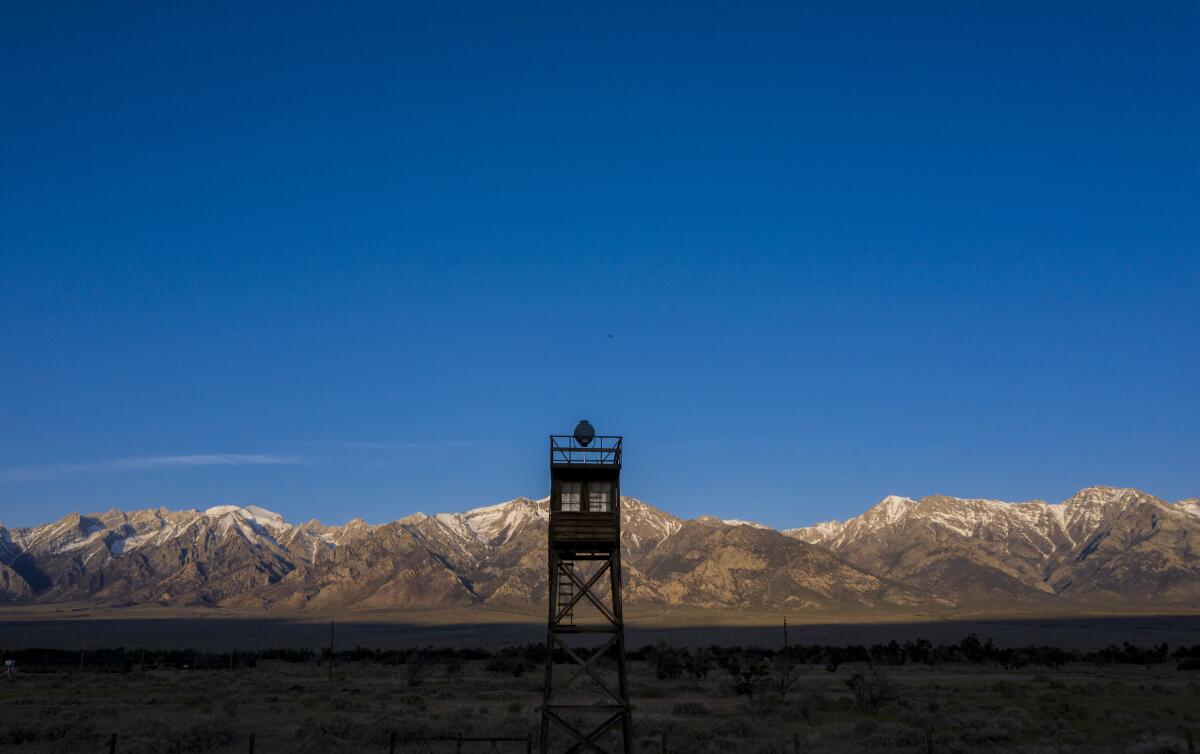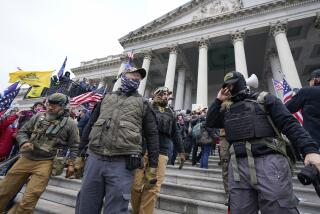Op-Ed: Just teach the truth about America’s less-than-glorious history

- Share via
I have spent 50 years teaching college students from coast to coast and points in between, and while much has changed over those years, one thing has not: an often abysmal ignorance among my students of the less-than-glorious side of American history.
That disturbing reality slapped me across the face anew when, early this month, I asked a first-year university honors class how many had heard of the Japanese internment camps. The reason for my question was the book that serves as the common reader for this year’s first-year students — George Takei’s graphic memoir, “They Called Us Enemy.”
The young people in my class are all high-achieving students. Racially diverse, they hail from many parts of the United States — Massachusetts, Ohio, Indiana, Florida, Texas, California, Virginia, Georgia, Kentucky, South Carolina, Tennessee and Pennsylvania.
Given their honors status, coupled with their racial and geographic diversity, I surmised that at least some of them would be familiar with the details in Takei’s book: In the wake of the Japanese attack on Pearl Harbor, the federal government rounded up more than 120,000 people of Japanese ancestry, two-thirds of them American citizens, and incarcerated them in “relocation camps,” often hastily built in desolate regions of the country and always ringed with barbed wire and guarded by federal troops.
The government gave these citizens a single week to report to detention centers, forced them to abandon their homes and businesses, and allowed them to take to the incarceration camps only what they could carry. They remained imprisoned until near the end of World War II.
Carl Higbie, a prominent supporter of Donald Trump, said recently that the mass internment of Japanese Americans during World War II was a “precedent” for the president-elect’s plans to create a registry for immigrants from Muslim countries.
Not a single student in my class professed to know anything at all about this tragic chapter in our nation’s history.
I shouldn’t have been surprised. We witness every day similar ignorance, coupled with a persistent reluctance to acknowledge our nation’s crimes.
Resistance to “The 1619 Project” abounds because it tells us what we may not wish to hear — the truth about the scope and brutality of American slavery and how it still defines the American nation.
Resistance to critical race theory also abounds because it suggests that racism and white supremacy are deeply embedded in the structures of American law and culture.
And resistance abounds to accounts that might make white people feel guilty or uncomfortable in their own white skin.
In fact, too many Americans habitually resist doing the one thing that might bring healing to a badly fractured nation — telling the truth about race and about our biases. And even as the movement to rectify such dishonesty gains ground, many resort to conspiracy theories, shifting the blame to some mysterious “other.”
The question that begs for an answer is, why? Why such ferocious resistance to the truth?
The answer is at least partly rooted in the myths that Americans — especially white Americans — have told from the time of the nation’s birth.
We have told ourselves that ours is a chosen nation, singled out by God to bear the torch of freedom around the globe.
We have told ourselves that the United States is nature’s nation, fully in sync with the natural order and the way things are meant to be.
And we have told ourselves that ours is a Christian nation, conformed to the virtues taught by the Christian faith.
Those three myths, taken together, have helped sustain the most pernicious myth of all — the notion that the United States is a wholly innocent nation. It is that deeply rooted sense of American innocence that prevents us from making sure every student knows about the Japanese incarceration camps, or the utter brutality of American slavery or the persistence of racism in American life or the near-extermination of the Native people who lived on this land long before the Europeans arrived.
One feature of the American sense of innocence is the way it divides so neatly along racial lines. Too few white people reflect in any critical sense on the myth of American innocence. Black people, on the other hand, have critiqued the myth unsparingly.
James Baldwin offers a case in point. In his 1963 classic, “The Fire Next Time,” Baldwin wrote that “my country and my countrymen have destroyed and are destroying hundreds of thousands of lives and do not know it and do not want to know it. ... It is the innocence which constitutes the crime.”
In our own time, no one has critiqued the American sense of innocence more forcefully than Ta-Nehisi Coates. “There exists all around us,” he wrote in an open letter to his son, “an apparatus urging us to accept American innocence at face value and not to inquire too much. And it is so easy to look away, to live with the fruits of our history and to ignore the great evil done in all of our names.”
The relation between the myth of American innocence and the way we as a culture tell American history is symbiotic. A refusal to fully acknowledge the negative side of American history sustains the sense of innocence, while the conviction that the United States is an innocent actor in a world of evildoers mandates that we teach children only the good and uplifting stories about America’s past.
Baldwin saw that point, too. “These innocent people,” he wrote, “[are] trapped in a history which they do not understand; and until they understand it, they cannot be released from it.” But “these innocent people,” he continued, could not afford to grapple with the truths of their past for fear of losing “their identity” as a noble and innocent nation.
Mental health workers grasp the fact that the broken human psyche can never heal until the person in question rejects the lies one is tempted to tell about one’s self and embraces reality instead.
Likewise, the United States will never heal from its deep racial divide until all Americans tell the truth about race, the truth about our history, and the truth about ourselves — the bad along with the good — and reject the myth that the United States is a perpetually innocent nation.
Richard T. Hughes is the author of “Myths America Lives By: White Supremacy and the Stories that Give Us Meaning.”
More to Read
A cure for the common opinion
Get thought-provoking perspectives with our weekly newsletter.
You may occasionally receive promotional content from the Los Angeles Times.










